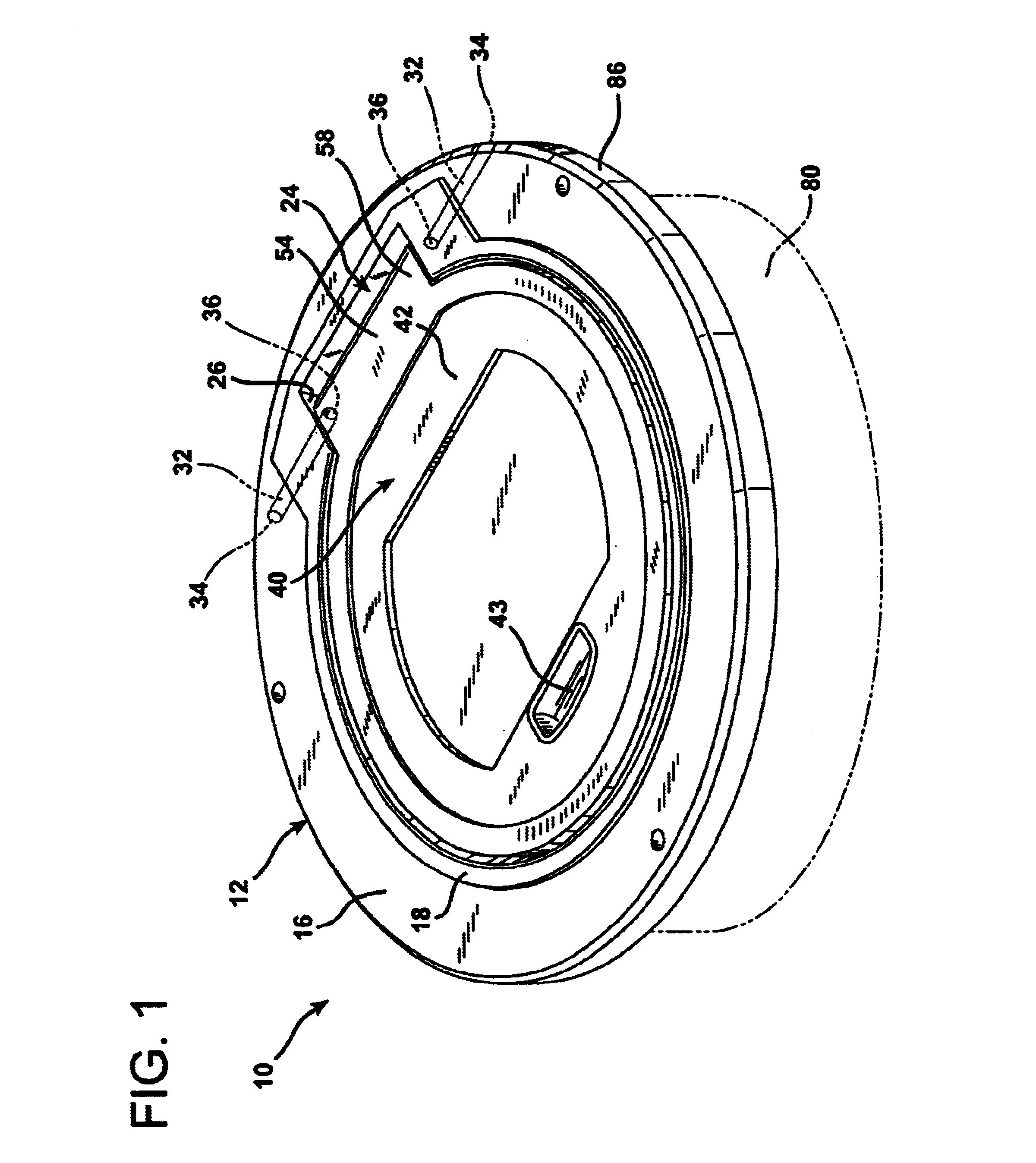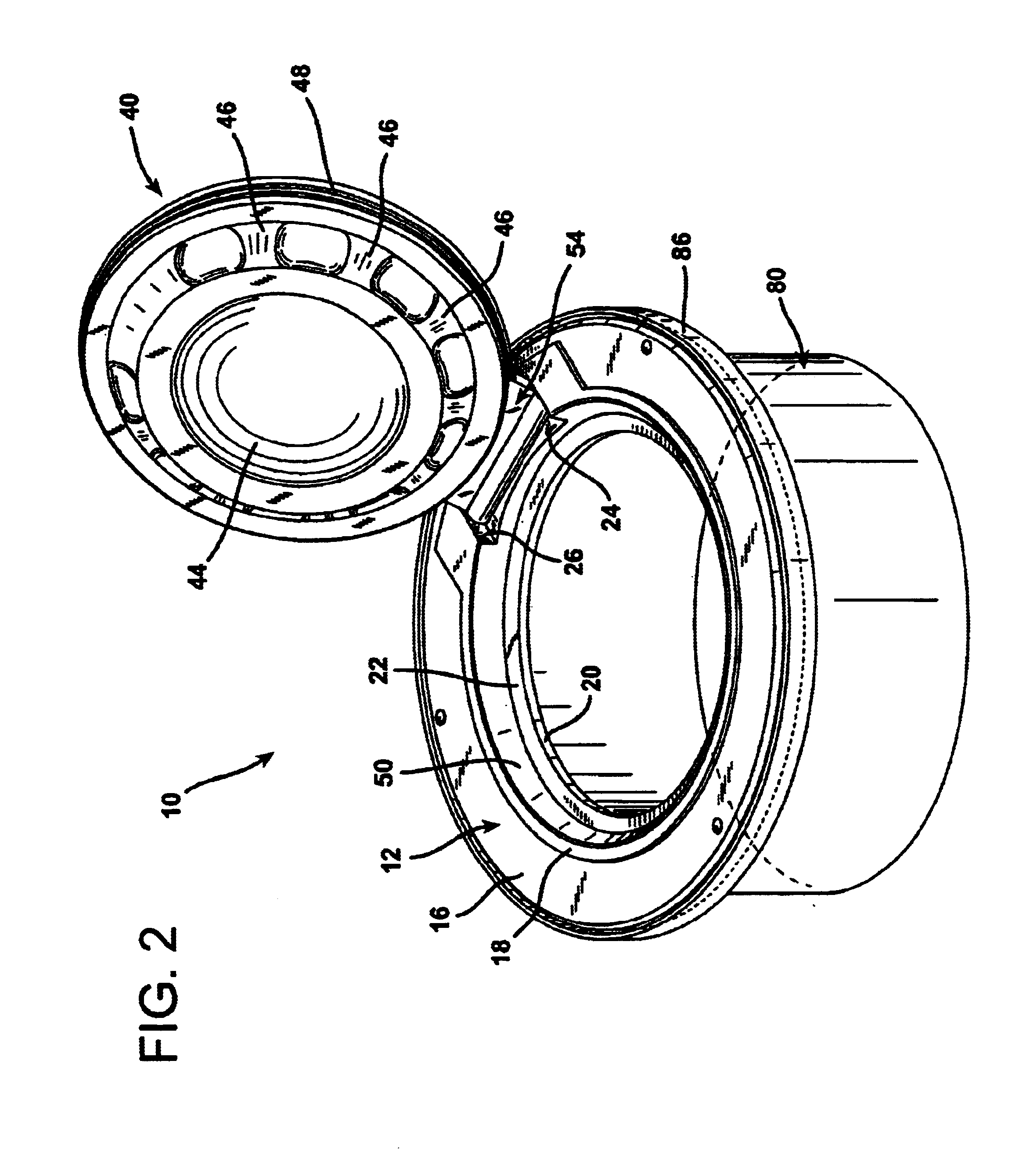Aircraft service pit lid hinge
- Summary
- Abstract
- Description
- Claims
- Application Information
AI Technical Summary
Benefits of technology
Problems solved by technology
Method used
Image
Examples
Embodiment Construction
FIGS. 1 and 2 illustrate an aircraft service pit lid assembly 10 according to the invention. The pit lid assembly 10 is comprised of a lid frame 12 adapted for installation into a surface across which aircraft travel. In the embodiment illustrated in FIGS. 1 and 2, the lid frame 12 is of a circular, annular configuration, although pit lid frames are also formed in square and rectangular configurations as well. The lid frame 12 defines a perimeter with a short, upright, cylindrical wall or edge 14, visible in FIG. 3. The structure of the lid frame 12 also forms a flat, horizontal deck 16 and a raised ring 18 that extends about the inner perimeter of the deck 16 and which forms a water dam obstruction that inhibits the flow of water from the deck 16 down into a central, circular access opening 20.
The access opening 20 is encompassed within a low, annular, upwardly facing peripheral bearing ledge 22 surrounded by and set beneath the deck 16. A slightly frustoconical-shaped wall surface...
PUM
 Login to View More
Login to View More Abstract
Description
Claims
Application Information
 Login to View More
Login to View More - R&D
- Intellectual Property
- Life Sciences
- Materials
- Tech Scout
- Unparalleled Data Quality
- Higher Quality Content
- 60% Fewer Hallucinations
Browse by: Latest US Patents, China's latest patents, Technical Efficacy Thesaurus, Application Domain, Technology Topic, Popular Technical Reports.
© 2025 PatSnap. All rights reserved.Legal|Privacy policy|Modern Slavery Act Transparency Statement|Sitemap|About US| Contact US: help@patsnap.com



